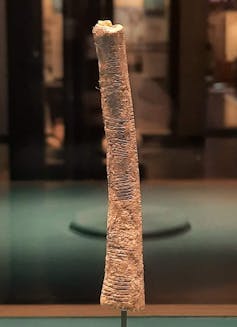Hundreds of years ago, alchemists dreamed of chrysopoeia: turning lead into gold. Scientists at the research institute CERN have achieved this medieval fantasy—if only for a fraction of a second.
Physicists used the world’s largest particle accelerator, the Large Hadron Collider (LHC), to eject three protons from lead atoms—effectively transforming them into gold atoms. Though this isn’t the first time scientists have created artificial gold, the researchers used a new mechanism involving near-miss collisions.
“The present analysis is the first to systematically detect and analyse the signature of gold production at the LHC experimentally,” Uliana Dmitrieva, a physicist from the ALICE collaboration at CERN, said in an institute statement. ALICE stands for A Large Ion Collider Experiment, and is one of a number of experiments at CERN’s LHC. Dmitrieva did not participate in the study detailing the new mechanism, published Wednesday in the Physical Review Journals.
Elements are defined by the number of protons in the nuclei of their atoms. Lead nuclei, for example, have 82 protons each, while gold nuclei have 79. The recent study saw lead nuclei zoom through the Large Hadron Collider at the mind-boggling rate of 99.999993% of the speed of light. The nuclei’s electromagnetic fields warped, creating a brief flash of light particles called photons. It was the interaction between these photons and the lead nuclei—not collisions, which give the collider its name, but near-misses—that caused the nuclei to shed some protons and neutrons in a process called electromagnetic dissociation.

If the lead atoms lost zero protons, they remained lead. If they lost one, they turned into thallium; if they lost two, they turned into mercury; and if they lost three, they turned into gold. The near-miss collisions successfully produced all three heavy metals, though the gold nuclei almost immediately broke apart—meaning gold existed for less than a second.
While the latest experiment produced nearly twice as much gold as previous attempts, the fleeting quantity is still trillions of times less than what a goldsmith would need to make even a single piece of jewelry.
“The results also test and improve theoretical models of electromagnetic dissociation which, beyond their intrinsic physics interest, are used to understand and predict beam losses that are a major limit on the performance of the LHC and future colliders,” explained John Jowett, an accelerator physicist from the ALICE collaboration who did not participate in the study.
While medieval alchemists might be disappointed to learn that the study reveals no way to generate piles of riches, the research joins a host of other achievements accomplished with the LHC. Perhaps the most famous of those is the discovery of the Higgs boson particle in 2012, whose existence confirms the theoretical presence of a new field that gives mass to other particles, like electrons. It remains to be seen what new discovery the world’s most powerful particle accelerator will reveal next.





















































